The Oregon Trail played a huge part in the settlement of the American West. Throughout the middle third of the 19th century hundreds of thousands made the long trek from Independence, Missouri to Oregon City – close to 2,200 miles. The legacy of the trail can still be seen in our culture; John Wayne’s first starring role was as a fur trapper leading a group of settlers west, and one of the iconic computer games of the 1980s was all about getting your wagon to Oregon without dying along the way. It wasn’t an easy game, because dying along the way was a real possibility.
300,000-500,000 people set out along the Oregon Trail; up to 20,000 of them never made it, and lie buried somewhere along its length. The biggest cause of death was disease, followed by battles with Native Americans – but malnutrition and even starvation were serious risks, too. It took most settlers from four to six months to make it to Oregon, and until late in the century there were few stores along the way. Space was limited, too. As well as food, the Conestoga wagons or prairie schooners used by settlers had to carry all the belongings they’d need to build a new life when they reached the west. Food had to be as compact and light as possible, as well as staying safe to eat for months.
Hardtack
 For most migrants the only way to get fresh bread on the Oregon trail was to bake it in a Dutch oven, and sometimes there wasn’t enough time or fuel to do that. When bread wasn’t available the other option was hardtack or ship’s biscuit. Developed to last through months-long voyage on sailing ships, hardtack was an ideal survival food on the Trail and most pioneer wagons set out with hundreds of pounds of it. It was simple – just a dense, dry biscuit baked from a simple flour and water dough with a little salt added – but contained a lot of energy.
For most migrants the only way to get fresh bread on the Oregon trail was to bake it in a Dutch oven, and sometimes there wasn’t enough time or fuel to do that. When bread wasn’t available the other option was hardtack or ship’s biscuit. Developed to last through months-long voyage on sailing ships, hardtack was an ideal survival food on the Trail and most pioneer wagons set out with hundreds of pounds of it. It was simple – just a dense, dry biscuit baked from a simple flour and water dough with a little salt added – but contained a lot of energy.
Pemmican
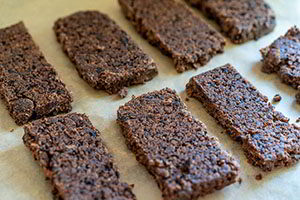 Like hardtack, pemmican is a compact, long-life survival food. Originally made by Native Americans, it soon became popular with settlers too. Pemmican is made by drying meat, pounding or milling it to a powdery consistency, then mixing it with rendered fat and sometimes dried berries.
Like hardtack, pemmican is a compact, long-life survival food. Originally made by Native Americans, it soon became popular with settlers too. Pemmican is made by drying meat, pounding or milling it to a powdery consistency, then mixing it with rendered fat and sometimes dried berries.
Related: Pemmican vs SPAM – Which is the Ultimate Survival Phone?
While hardtack was loaded with carbohydrates, pemmican is a rich source of protein and fat. It’s not the tastiest food on its own – many pioneers commented on its bland flavor – but could be used in a wide variety of recipes. These included stews and “rechaud,” a meal made by frying chunks of pemmican with potatoes and onions.
Preserved Meat
 As well as pemmican, settlers often carried more traditional forms of meat. Bacon was the most common choice. Well-salted, dry-cured bacon would last for months if it was kept away from sunlight, which travelers on the Trail usually did by wrapping it then storing it inside a barrel of flour. Guides from the time, written for those planning to head west, recommended bacon as part of the food supply. One guide suggested a party of three people should take 600 pounds of bacon with them, which works out at over a pound a day per person. Bacon came unsliced; slices of various thicknesses could be cut off and boiled or fried, forming the core of most meals on the trail.
As well as pemmican, settlers often carried more traditional forms of meat. Bacon was the most common choice. Well-salted, dry-cured bacon would last for months if it was kept away from sunlight, which travelers on the Trail usually did by wrapping it then storing it inside a barrel of flour. Guides from the time, written for those planning to head west, recommended bacon as part of the food supply. One guide suggested a party of three people should take 600 pounds of bacon with them, which works out at over a pound a day per person. Bacon came unsliced; slices of various thicknesses could be cut off and boiled or fried, forming the core of most meals on the trail.
Related: The Pioneer Dish That Never Ends: Perpetual Soup (Stew)
Until the 1860s travelers also hunted the bison herds that covered the prairie. That created a problem of its own, though. A single bison could provide over 450 pounds of fresh meat, so much that even a whole wagon train wouldn’t be able to eat it all. The solution was to make the surplus meat into jerky. Settlers would cut the meat into strips then hang them from a rope strung round the top of their wagon. The sun and wind would dry it as they traveled. One pioneer said every wagon in a train looked like it was decorated with a red fringe.
Flour
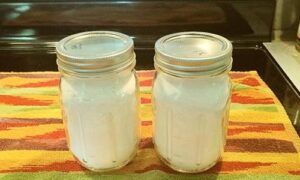 Along with meat, flour was a main staple on the Trail. The same guide that recommended 600 pounds of bacon said a party of three should take five barrels – 1,080 pounds – of flour with them. That comes to two pounds per person a day for a six-month trip. So what were they doing with all that flour? Well, a lot of it got made into bread, mostly baked in a Dutch oven over an open fire. Flour was also added to stews – one simple stew recipe just consisted of pemmican, flour and water, cooked in a skillet.
Along with meat, flour was a main staple on the Trail. The same guide that recommended 600 pounds of bacon said a party of three should take five barrels – 1,080 pounds – of flour with them. That comes to two pounds per person a day for a six-month trip. So what were they doing with all that flour? Well, a lot of it got made into bread, mostly baked in a Dutch oven over an open fire. Flour was also added to stews – one simple stew recipe just consisted of pemmican, flour and water, cooked in a skillet.
Settlers on the Trail could get amazingly creative with flour. Despite the primitive baking facilities, they often made cakes sweetened with sugar or molasses.
Cornmeal
 As well as flour, settlers carried cornmeal. It’s a good source of carbohydrates, which was important when people were walking beside their wagon all day. Cornmeal was the main ingredient in johnnycake (also called hoecake), a simple, quick flatbread that formed part of many meals along the Trail. A basic johnnycake recipe is just cornmeal mixed into batter with water and a little salt, then cooked in a skillet. It can be sweetened with molasses, or milk can replace some of the water.
As well as flour, settlers carried cornmeal. It’s a good source of carbohydrates, which was important when people were walking beside their wagon all day. Cornmeal was the main ingredient in johnnycake (also called hoecake), a simple, quick flatbread that formed part of many meals along the Trail. A basic johnnycake recipe is just cornmeal mixed into batter with water and a little salt, then cooked in a skillet. It can be sweetened with molasses, or milk can replace some of the water.
Dairy
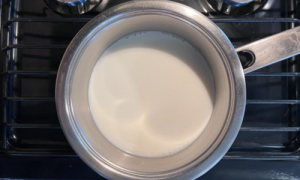 Many migrants took a dairy cow on the trail with them. Fresh milk could be drunk or used for cooking; cream would be churned into butter. Often, settlers would put cream in a wooden bucket and hang it under their wagon before they set off in the morning. By the time they stopped for the day, the motion of the wagon would have churned it for them, separating the cream into butter and buttermilk (which could be used to make cornbread).
Many migrants took a dairy cow on the trail with them. Fresh milk could be drunk or used for cooking; cream would be churned into butter. Often, settlers would put cream in a wooden bucket and hang it under their wagon before they set off in the morning. By the time they stopped for the day, the motion of the wagon would have churned it for them, separating the cream into butter and buttermilk (which could be used to make cornbread).
=>> The Lost Self Reliance Secrets of the Greatest Generation <<=
Rice
Like cornmeal, settlers valued rice as a source of carbs. It was also easy to store, and white rice has a very long shelf life as long as it’s kept dry.
Lard
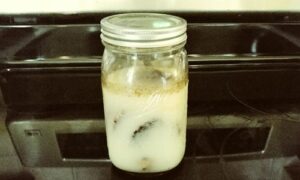 Fats are an important nutrient, and also essential for cooking. Pioneers on the Trail did a lot of their cooking with bacon fat – after all, they ate a lot of bacon – but lard had its uses too.
Fats are an important nutrient, and also essential for cooking. Pioneers on the Trail did a lot of their cooking with bacon fat – after all, they ate a lot of bacon – but lard had its uses too.
Related: 10 Foods You Should Store In Lard
One popular use was for making pies. Many people took dried apples with them, and a pie would be a treat to break the monotony of life on the Trail. Lard and flour would make the pie crust; sugar and dried apple were the filling.
Luxuries
Dried apple wasn’t the only luxury migrants liked to take with them. Tea and coffee (plus sugar to sweeten them) were essentials. Hot drinks are always good for morale, especially when the weather’s cold – and it often was, along the Oregon Trail. A mug of hot tea or coffee made breaking camp and hitching the oxen to the wagon much less miserable on a cold fall morning.
Salt and pepper were two more things you’d find in every wagon. They helped liven up the often plain meals settlers cooked, and salt is also a good preservative. Many people also took some hens with them, to give a steady supply of fresh eggs on the journey. Eggs expanded the cooking options a lot, especially when it came to baking. You can make a much better cake with eggs.
The foods those adventurous people carried on the Oregon Trail 150 years ago look plain and old-fashioned to modern eyes, but they fed hundreds of thousands of people on the long journey west. As basic as they were, they added up to a diet that was nutritious enough to get settlers through a tough physical ordeal. Any of them are just as valuable as part of a food stockpile today.
One More Thing!
Speaking about your food stockpile, the truth is the MOST important thing to consider is shelf life as you stock up. Do you know what long-lasting foods you should focus on? Most people do not.
To help, we launched The Lost Super Foods some time ago. It features OVER 126 lost food recipes, recipes our ancestors knew and survived with without relying on modern technology of any kind. And we have a special deal available for our readers for a limited time. You could learn about:
- The Great Depression Food That Saved America
- The Long-Lasting Bread of the 1800s
- The Cheese Preservation Secret That can Keep It Good at Room Temperature
- The Long Lasting Probiotic that Fueled the Greatest Conquests of The Golden Horde
- The Ottoman’s Empire Shelf-Stable Meat
- The Fermented Soup
- Over 100 more lost foods
All this and 2 extra digital downloads: “An Underground Year-Round Greenhouse in Your Backyard” and “Projects From 1900 That Will Help You in the Next Crisis“.
As a loyal reader of Ask A Prepper, you get The Lost Superfoods and the 2 free digital downloads for just $37! This is the BEST price the super book was ever offered at.
Only 1500 copies are sold at the discounted price! Grab your copy NOW from THIS LINK!
Stay Safe and make sure your pantry is full at all times! You NEVER know when the next crisis hits!
You may also like:
4 Shocking Survival Lessons From The Australian Pioneers
250 Powerful Remedies You Need For Each Part Of Your Body (Video)
Tools The Early Pioneers Used on A Daily Basis

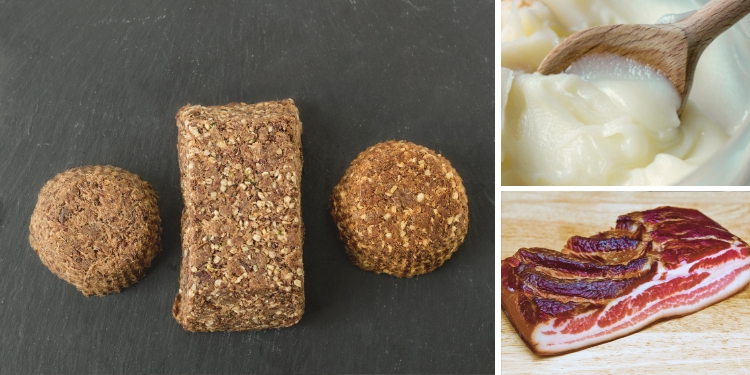
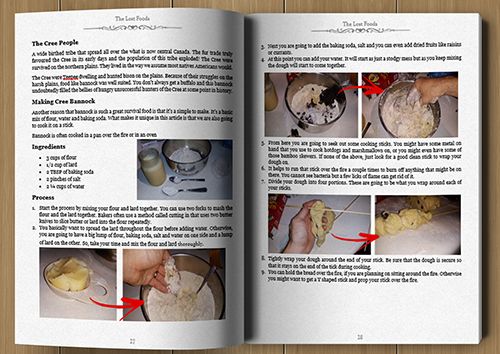




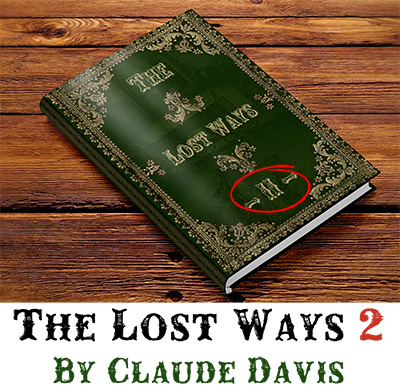
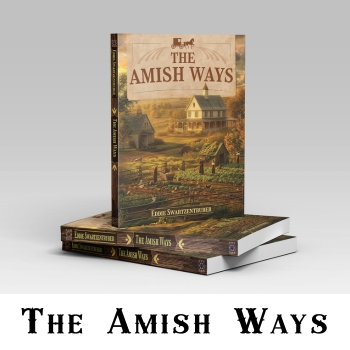

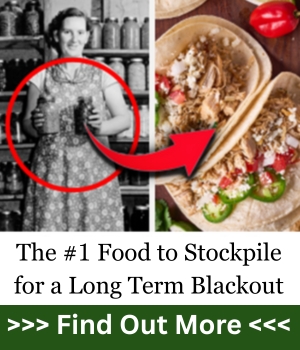






Beans , Rice, Meal , Flour
All Basics of Protein
Add Broth , Meat , Fish and you have a meal
Simple items for lasting Goodness
Back to the basics , this was the life of True Immigration
No Gov, No welfare, No handouts for Social Engineering
People in hardship are more Thankful , and Appreciate the simple things of life
The are more apt to cry out to God and Seek him for provision
This was the true wagon Train. nevertheless there were evil amonst them and there will always be a battle for the souls of mankind , God or Evil
who will possess you and direct your paths ?
Like the past , there is nothing new under the sun.
Love this article! Being a history buff, I was quickly engaged in this writeup! Thank you for sharing the detailed information you don’t typically get from history books!
Howdy from an undisclosed location high in the desert swamp,
Sometimes it seems intimidating to try these items. I was a bit. Rendering tallow in a crock pot makes it simple.
I have cured, canned or stored:
Bacon, tallow, hardtack, beans, chili, sloppy Joes, hot sauce, bbq sauce, brisket, stew, chicken soup, jelly, sausage, ground meats. I guess I started canning in bits about 2014. 2020 I started canning with intent. Not just to learn but to store. These jars also make great gifts. I did mess up but kept at it. I freeze leftovers and can maybe once a month now. I store or give away as a gift.
It’s an interesting feeling doing these like my ancestors and when I was a little boy. Knowing I can do it. Knowing I can store, freeze or can and have high quality food is a sense of satisfaction and accomplishment. I may have ruined food in my few years, but it wasn’t much. When I showed my yuk jar to an older neighbor their comment to me was a question. What did you do wrong? I said, I don’t know. Their answer was sometimes it just messes up. Throw it out and save the jar and ring. Do it again.
Just try it. My thought is if people can do this on the trail, I can do this in my kitchen and smoker.
Remember the Alamo
Remember North Carolina
In all things, remember to have your soul prepared.